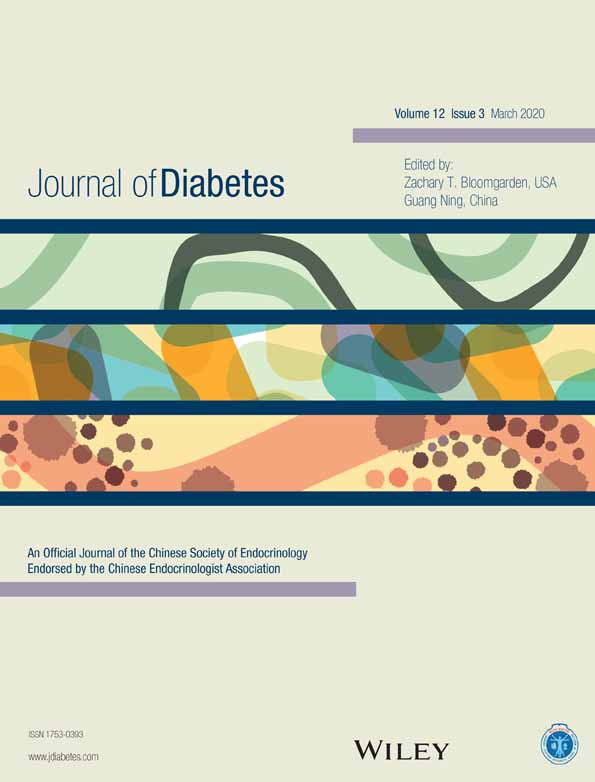The association between sleep efficiency and diabetes mellitus in community-dwelling individuals with or without sleep-disordered breathing
伴有或不伴有睡眠呼吸暂停的社区人群中睡眠效率与糖尿病发生的相关性研究
Funding information: This study was supported by National Heart, Lung, and Blood Institute cooperative agreements U01HL53916 (University of California, Davis), U01HL53931 (New York University), U01HL53934 (University of Minnesota), U01HL53937 and U01HL64360 (Johns Hopkins University), U01HL53938 (University of Arizona), U01HL53940 (University of Washington), and U01HL53941 (Boston University).
Abstract
enBackground
Sleeping habits have been reported to be associated with diabetes mellitus. This study aimed to explore the relationship of sleep efficiency with diabetes mellitus in individuals with or without sleep-disordered breathing based on polysomnography records.
Methods
We enrolled participants from the Sleep Heart Health Study. Objective indicators of sleep characteristics including sleep efficiency, sleep latency, slow-wave sleep, wake after sleep onset, and total arousal index were monitored via in-home polysomnography. Sleep efficiency was divided into grade 1 (≥85%), grade 2 (80%-84.9%), and grade 3 (<80%). Multivariate logistic regression models were utilized to investigate the association between sleep quality and diabetes mellitus.
Results
The present study comprised 4737 participants with a mean age of 63.6 ± 11.0 years. The prevalence of diabetes mellitus was higher in those with grade 3 sleep efficiency than that in those with grade 1 and grade 2 sleep efficiency in participants with (10.9% vs 8.5% vs 8.3%, respectively; P =.134) or without (9.5% vs 5.6% vs 3.5%, respectively; P <.001) sleep-disordered breathing. After adjusting for potential confounding factors, sleep efficiency <80% was associated with the prevalence of diabetes mellitus only in participants without sleep-disordered breathing (odds ratio, 1.894; 95% confidence interval, 1.187-3.022, P =.007).
Conclusion
Poor sleep efficiency is associated with diabetes mellitus in those without sleep-disordered breathing. Therefore, the relationship between sleep efficiency and diabetes mellitus is worth further investigation.
摘要
zh背景
前期研究发现睡眠习惯与糖尿病患病有关。本项研究旨在基于睡眠多导图监测探索伴有或不伴有睡眠呼吸暂停的社区人群中睡眠效率与糖尿病患病之间的关系。
方法
本次研究从睡眠心脏健康研究(Sleep Heart Health Study)中筛选参与者。家庭式睡眠多导图监测下的客观睡眠指标包括睡眠效率、睡眠延迟、慢波睡眠、睡眠总觉醒时间和夜间总觉醒指数。睡眠效率被分为一级(>85%), 二级(80%-84.9%), 和三级(<80%)。多元逻辑回归分析用来调查睡眠质量与糖尿病之间的关系。
结果
本研究包含4737名参与者, 平均年龄63.6±11.0岁。整体人群中, 睡眠效率较低的人群具有糖尿病高患病率。三级睡眠效率与一级和二级相比, 糖尿病患病率分别在伴有(10.9% vs. 8.5% vs. 8.3%; P=0.134)或不伴有(9.5% vs. 5.6% vs. 3.5%; P<0.001)睡眠呼吸暂停的人群中增高。校正潜在的混杂因素后, 只有在不伴有睡眠呼吸暂停的人群中睡眠效率小于80%与糖尿病的患病率密切相关(OR 1.894, 95% CI 1.187-3.022, P=0.007)。
结论
不伴有睡眠呼吸暂停的人群中, 较低的睡眠效率与糖尿病患病率密切相关。因此, 睡眠效率与糖尿病之间的关系值得进一步的探究。
CONFLICT OF INTEREST
None declared.




